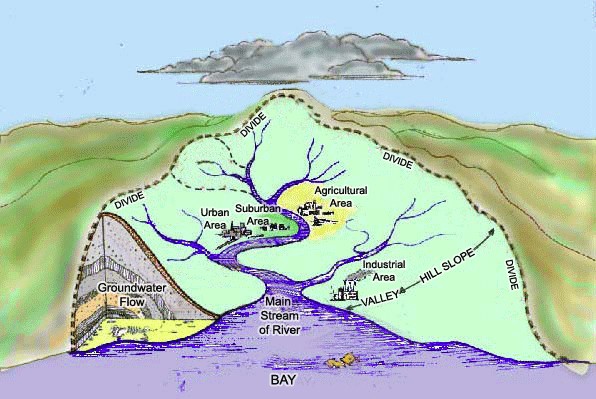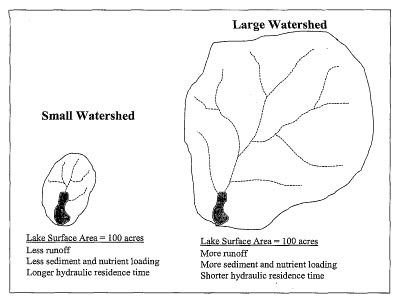Lakes are only one part of a larger system called a watershed. A watershed consists of two major components, water and land, and is made up of many watercourses, including the land surrounding them, all of which drain into a specific point at a lower elevation (see Figure 1).
The relationship between a lake and its watershed is a vital one and it is important to know that the results of our activities anywhere in a watershed, including on the land, can have a negative impact on the health of that watershed’s lakes and rivers.
We all have an environmental responsibility for the care of our watersheds. When we do not take the necessary precautions, our lakes and other bodies of water may suffer from problems such as widespread aquatic plant growth, algal blooms and the loss of aquatic life and habitat. These problems are important ones because all of them can impact the health of the body of water and ultimately the uses it can support in the watershed. Our watersheds are important ecosystems and their health can have a big impact on our way of life.


